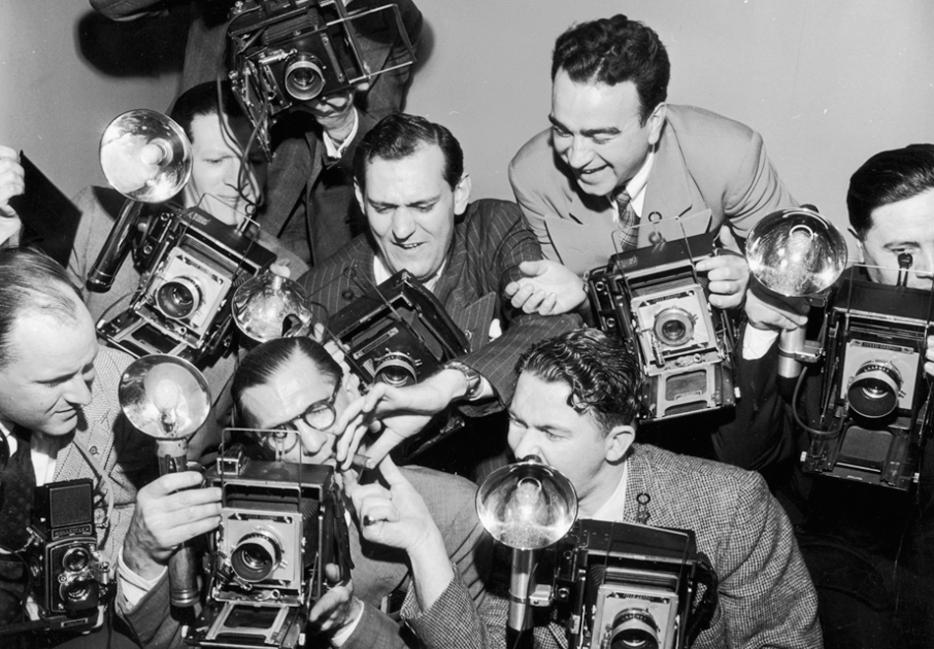Ian Brown thinks the glut of digital photographs is destroying the mindfulness with which we capture the world. This year, the acclaimed Globe and Mail writer was an adjudicator for the 2013 Banff Mountain Film and Book Festival photography competition. As he related in a feature for the Globe, for the first time, Brown and other jury members couldn’t pick a winner, or even a runner-up, as not one of the entries even “managed to tell the simplest of stories.”
Brown theorizes as to why this is happening. One proposal: like addicts, we turn to Instagram et al and simply shoot to confront “the uncomfortable difficulty of actually seeing,” instead craving “the instant gratification and collective approval that the Internet deals out to us.” Another idea: “as we live less and less physically and more and more virtually, we take pictures as substitutes for the real.”
So here’s my assigned role as a technophile writer under 40: I’m now supposed tell you how misguided Brown is, how false his suppositions, how flimsy his argument. And I will, too—not just because that’s my burden, but because I believe those assertions to be mostly true.
He is essentially saying the worth of an aesthetic form is being diluted by not only the sheer quantity of images, but the ease with which they can be created, distributed, and consumed. It’s a familiar argument. Twitter was going to destroy long-form writing, just as YouTube was going to bring about the end of film. That sort of wariness of novel technologies goes back to the foundations of Western culture: Plato argued that writing was lesser because it would destroy memory and encourage a broader forgetfulness.
The trouble with these arguments is largely that they assume a base unit of communication must perform the same function throughout history. Brown is quite right when he says that images in Instagram or Snapchat aren’t memories as much as “certificates that we physically exist.” It’s just that there may not be anything especially wrong with that. The photo as tissue of social connection and the photo as social commentary are not the same thing, and the arrival of a new purpose for the image doesn’t necessarily supplant the older one.
In fact, given the absolute explosion of “high-end” photography sites online like 500px, it seems fair to say that the selfie hasn’t displaced the thoughtful photo at all. In fact, just as with the lamentations over the death of writing and books, it’s entirely plausible that the democratization of forms like writing and photography means more quality stuff is being produced than ever before—it’s just a little harder to find.
All of that, however, elides the really important thing: perhaps the standards by which we judge “the good” need to change. After all, one could argue that if “the good” is an evaluation of worth, then worth is something that shifts dependent upon need. What constitutes good literature, film or photography may not stay the same over time because perhaps art needs to fit into a context in a certain way. If the world is awash in pictures, then perhaps the photo essay needn’t tell a story, but instead act as an anchor or an interpretive lens—a key to a cartography of images.
So, well, good. We’ve argued against Brown, have diligently done our duty to fight technophobia, and fostered our undying love for the digital stuff. Let us unite under the banner of #nodads, and put those oldies in their place. Except, I’m a bit bored by all that. In fact, I’m starting to become profoundly uncomfortable with it.
Think of it this way: op-ed pages, cafe conversations, chatter during lunch breaks—all of it is filled with people feeling like they’ve lost touch with something, or that a less real, less good “virtual” thing has replaced the true thing that came before. And the response of so many technophiles has become a knee-jerk dismissal of what is clearly now not just “misguided thinking” but a sociological phenomenon all itself. If broad swaths of people feel as if the basic tenets of their humanity—or, barring that, the things they love and define themselves through—are threatened by the new, then that is a thing worthy of consideration, even when we disagree with the assumption. More importantly, it demands empathy.
I don’t think Brown’s argument is altogether convincing, but I do think it needs to be taken seriously. Even if photography hasn’t gone to the dogs, perhaps the fact that so many people are worried that it and other arts forms have is a sign that people require something to hold onto and not just more condescending rebuttals. That is, some sign, locus or system for discovering what many of us already know: that digital technology “done right” can lead you to beauty, depth, stillness and reflection.
Recently, popular web comic XKCD comic featured a post on the many things people have said in the past about how the newfangled is ruining writing or conversation or simply being human. Look, it said triumphantly, we have always had these naysayers—and boy were they wrong! Except that we have no idea if they were. As scholar Alan Jacobs points out, just because we think the trade-offs of TV or blogs or digital cameras are worth it, unless we consider what has been lost, we’ll never look at our situation honestly. And as Jacobs suggests, “even if people were wrong to fear certain technologies in the past, that says absolutely nothing about whether people who fear certain other technologies today are right or wrong. It’s an irrelevant datum.” Most essentially of all, it’s one profoundly lacking in sympathy for other humans. If that basic precept isn’t at the root of all the intellectualizing, then it isn’t just photography that may be getting ruined.






